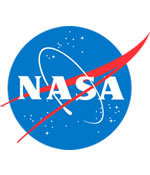
Image credit: NASA
A new report released Thursday by NASA’s Inspector General says that the agency has too many astronauts for the number of shuttle flights. As of December 2002, 53 of the agency’s 116 astronauts had yet to actually go into space because of fewer shuttle flights than originally planned; what was supposed to be 8 or 9 flights a year ended up being only five times a year. Ironically, this report was prepared before the Columbia disaster, so the loss of another orbiter will make this problem even worse. Astronauts selected for the 2004 class probably won’t make it to space until 2009.
The review “Improving Management of the Astronaut Corps” (G-01-035) has been posted to the NASA Office of Inspector General Web.
The NASA Office of Inspector General (OIG) evaluated the management of the astronaut corps. The OIG considered whether the NASA astronaut corps was being used effectively, was supportive of the Agency’s current and future mission, and was managed in accordance with governing policies and procedures. We conducted this review because the effective management of the astronaut corps is integral to the success of NASA’s mission.
Our report was scheduled to be released in final form in February 2003. However, when the Space Shuttle Columbia and its crew were lost we decided to delay the release of the report until a more appropriate time. Now that NASA is working to recruit an Astronaut Candidate Class of 2004 that includes pilots, mission specialists, and educator astronauts, we believe that our recommendations will aid the decision- making process.
Results of Review
The substance of the report has not been adjusted to reflect the loss of the Columbia or its crew. We found overly optimistic predictions of future flight rates, minimal regulation of astronaut candidate selection, and the need to staff engineering positions at Johnson Space Center to be factors in the Agency’s astronaut hiring process. As a result, costs for the astronaut program were higher than necessary and not all individuals trained to be astronauts were being used in a manner commensurate with their expensive training. We projected that the mission specialists in the class of 2000 would wait an average of 105 months to fly for the first time. Based on our projection, the last mission specialist in that class would not fly until April 2010 (116 months after joining the astronaut corps).
Recommendations
To assist the Agency in assuring that the size of the corps is more closely aligned with mission and program needs, we recommended that the Agency establish formal guidelines for certain aspects of the astronaut candidate selection process, conduct more realistic analyses of astronaut corps size needs, document reasons for deviating from those analyses, and establish formal criteria for astronaut technical assignments.
Management’s Response
NASA management concurred with our recommendations and has planned corrective actions that we consider responsive.
Original Source: NASA News Release

Oh, man. I feel for the “leftovers”. They should start a club and name it after Deke Slayton – the Mercury Astronaut grounded for a heart condition.
The good news is he flew in a Apollo-Soyuz Test Project twelve years later. I hope these guys do not have to wait that long!